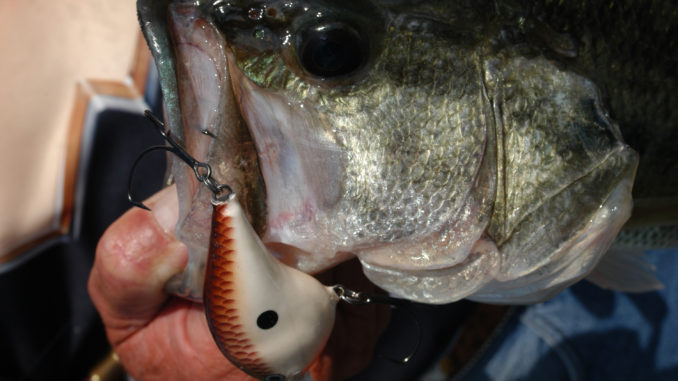
November is time to keep ‘plugging’ along
Most people know my favorite bait is a mop jig, and I’ll always have one tied on, but to me, November is one of the best months of the year to fish a crankbait.
A lot of fishermen think May and June are the most-popular crankbait months in the Carolinas, but that’s deep-cranking, offshore, with deep-diving baits like Rapala DT-14s and DT-16s. They don’t know that cranking in the fall can be phenomenal. You don’t have the pressure on the lakes you’ve got in the spring, because a lot of guys are deer-hunting. I admit, I alternate deer-hunting and fishing in the fall, but if you don’t go out and fish a crankbait in the fall, you’re missing out.
I typically use a crankbait to try and locate fish: find where they are, the depth, what kind of cover they’re using. Then I’ll settle down with a jig and cover that area. That’s true in May and June. But in November, a lot of times I’ll have a crankbait rod in my hand 95 percent of the day, because it’s not only a great tool to locate fish, but in the fall, you can catch every bass in the school.
One difference between fishing a crankbait in November versus May and June is depth. I’ll be fishing back in creeks this month, fishing smaller baits like a DT-4 or DT-6. With the water levels beginning to drop as the drawdown starts, a lot of your shallow cover is just barely in the water or out of the water, so you can be offshore and still be cranking four to six feet deep.
I’ll fish a small crankbait like that on a 7-foot, All-Star cranking rod. You’re fishing shallow, open water, but you can still cast to targets with a 7-foot rod, and you can cast a pretty good ways. That rod is just the best of both worlds.
What I’m looking for is bait. Shad are easy to find; sometimes, there are too many of them. I think about how hard it might be to get a bass to bite your lure when there are 10,000 shad everywhere you look, but a crankbait will get you reaction bites. Shad is my favorite crankbait color in the fall, and pearl-gray shad is absolutely my favorite. The first time I saw that color, I thought, “Man, that looks just like the threadfin shad we’ve got in our lakes.”
I usually go back about halfway in a creek and start fishing back, but if I see bait before I get there, I’ll stop and work my way back. If you start where the bait is, I don’t think you’ll miss the bass, so I pay attention to my Humminbird electronics and scan the surface so I’ll know where to cut off my Evinrude and drop my Minn-Kota trolling motor in the water.
The great thing about a crankbait is that you can cover so much water. I won’t leave a stone unturned wit hone. I’ll start along the edge of the creek channel, then maybe look up on the flats, fish a laydown tree if I see one in the water, maybe a dock or some other kind of cover that’s still in the water, maybe a shallow stump. But if I had to fish a tournament, I’d start by working the edges of the creek channel.
You really want to pay attention to where you get bites, because in the fall, fish are easier to pattern. If you think about it, with the water levels down, there are fewer places for a bass to go, and with all those baitfish confined to a section of the creek, you’ve reduced the number of places you have to look.
It’s like deer-hunting. If you take away all the thickets, there aren’t gonna be as many places for a big buck to hide.
The other thing is, sometimes you’ll find fish that aren’t in a textbook place, a place they’re really supposed to be. And those are the kinds of fish that you can win a tournament with, much more so than fish that are on textbook places — because everybody’s fishing those places. There is so much more pressure on textbook places; everybody’s got great electronics and maps and everybody can find where the creek-channel run is.
So don’t miss the chance to spend some time fishing a crankbait this month. It is so much fun to find a good concentration of fish and know you’ve got a chance to catch one every cast until your arms get tired.




Be the first to comment